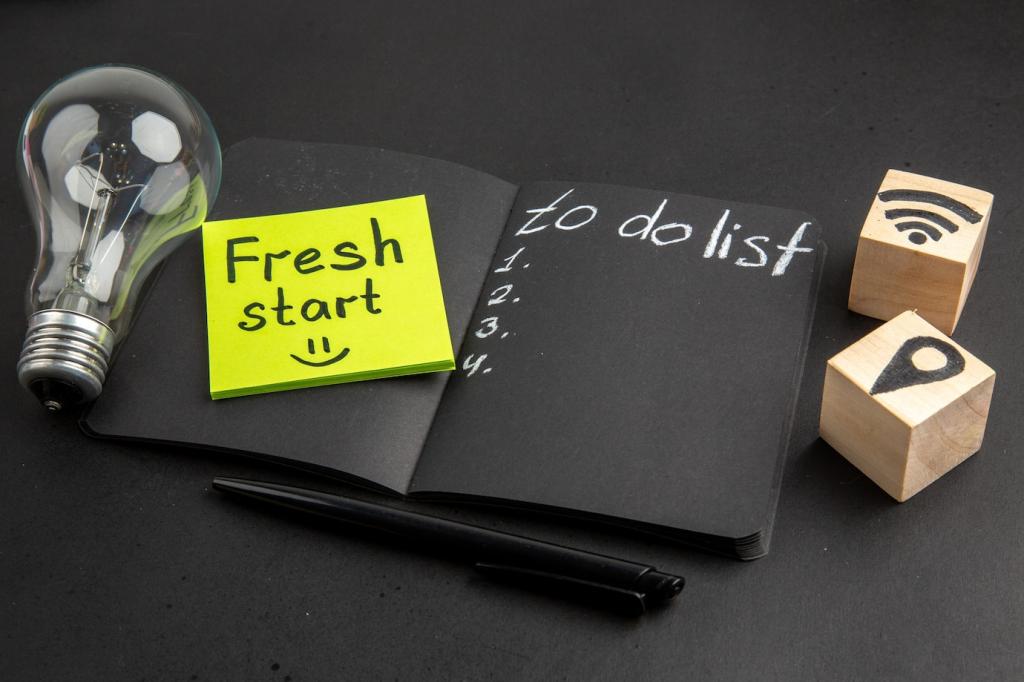
Getting Started with DIY Electronics: Your Friendly Launchpad
Selected theme: Getting Started with DIY Electronics. If you’ve ever wondered how a blinking LED becomes a finished gadget, this is your welcoming doorway—clear steps, honest stories, and encouragement to tinker, learn, and proudly share your first circuits.
Your First Bench: Tools and Parts You Truly Need

The Beginner’s Toolkit That Works
Start with a breadboard, a basic digital multimeter, assorted jumper wires, a dependable USB power source, and a small set of screwdrivers. Add needle-nose pliers and flush cutters, and you’ll be ready for most beginner builds.

Components With Character
Pick up LEDs, resistors, buttons, a buzzer, a potentiometer, and a few sensors like a photoresistor. Each part teaches a concept: light, resistance, input, and feedback. Every little experiment becomes a practical lesson worth remembering.

Safety From Day One
Unplug before rearranging circuits, check polarity twice, and never exceed voltage ratings. Keep your work surface clear and dry. Treat your multimeter with care and it will repay you with confidence and accuracy.
Electricity Explained Without Headaches
Imagine voltage as pressure, current as flow, and resistance as a narrow pipe. Together they dictate how electrons move through your circuit. Keep this picture in mind whenever numbers feel abstract or intimidating.
Electricity Explained Without Headaches
Many beginners fry an LED by skipping a resistor. I did once, and the quick flash taught me more than any diagram. Use V = I × R to choose a safe resistor and save your components.





Breadboards and Schematics: Building With Confidence
Reading Schematics Like Maps
Think of schematics as city maps for electrons. Identify symbols for resistors, LEDs, switches, and power rails, then translate them to real parts. Highlight paths to reduce confusion when wiring on the breadboard.
Breadboard Traps to Avoid
Power rails are often split; verify continuity before assuming they’re connected. Keep components in the same channel, and never straddle a center gap without jumper wires. These small checks prevent head-scratching failures.
Color Discipline With Jumper Wires
Use red for power, black for ground, and other colors for signals. Consistent color choices help you spot mistakes quickly and make sharing your builds easier for helpful feedback from others.
Microcontrollers: Arduino, micro:bit, and First Code
Arduino Uno and micro:bit both shine for beginners. Arduino offers endless examples and shields, while micro:bit has built-in sensors and a playful ecosystem. Pick the one that excites you and start experimenting.

Your First Shiny Volcano
A good solder joint looks smooth and slightly concave, like a tiny volcano. Heat the joint, not the solder, and feed just enough to bond. Practice on scrap boards before tackling real projects.

Fixing Bridges and Cold Joints
If solder blobs between pads, use wick or a pump to lift it. Dull, grainy joints often mean insufficient heat. Reheat briefly and reflow. Small corrections protect hours of future reliability.

Care, Ventilation, and Comfort
Work with ventilation, keep your iron tip clean with a damp sponge or brass wool, and rest your wrists. Comfort matters; relaxed hands make steadier joints and far fewer accidental burns.
Powering Projects Safely and Smartly
USB power is convenient and stable, while batteries provide portability. Avoid the classic 9V battery powering motors; it sags quickly. Match current needs and consider rechargeable options when projects leave the desk.


Powering Projects Safely and Smartly
Reverse polarity can release the so-called magic smoke. Add a diode or keyed connector to prevent mistakes. A one-minute check before power-on protects hours of careful wiring and careful planning.
Keep Learning: Community, Documentation, and Next Steps
Take photos, list parts, and note mistakes alongside successes. Clear documentation helps future-you, and it invites collaborative advice. Share your first LED triumph to inspire someone else starting today.

